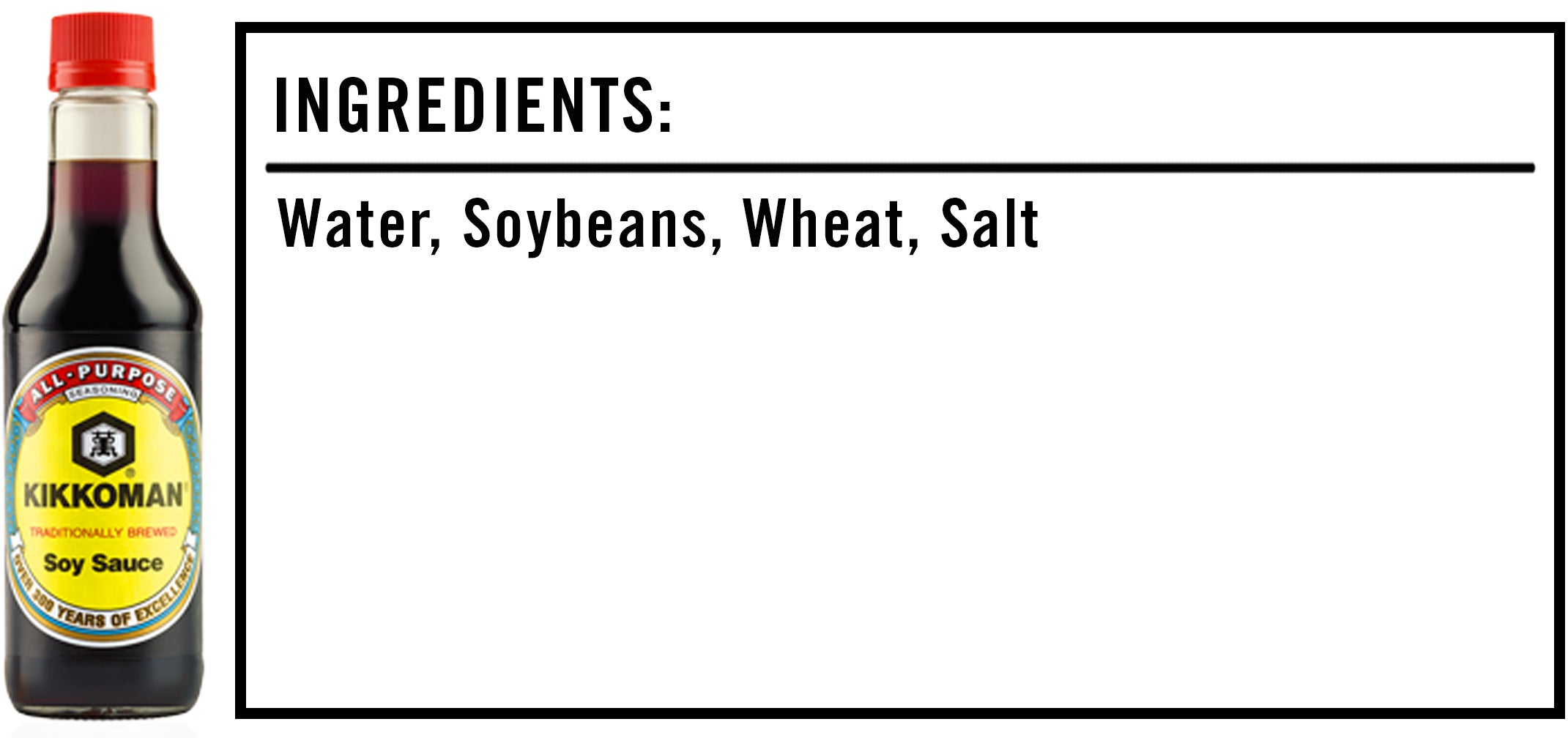We’re often told that you should never eat anything (or put anything on your body) if you don’t recognize everything on the ingredients list. But since most of us have no idea what xanthan gum or potassium benzoate are — or more importantly, what they’re doing to our bodies — we’re decoding the ingredients in the many things Americans put in (and on) themselves with the help of an expert.
This edition: Kikkoman Soy Sauce, which is made from four separate ingredients that we’ve broken down in the exact order they appear on their website.
First, though, I want to talk about tamari — most commonly known as the gluten-free (depending on the brand) version of soy sauce. Tamari typically has a darker color, thicker consistency and richer flavor than your average soy sauce. It can also taste smoother and less salty than regular soy sauce. Apparently, some sushi restaurants keep tamari in the back — since it can be considered slightly more “gourmet” than plain soy sauce — so you might be able to snag a taste by simply asking.
With that, let’s take a look at the ingredients in Kikkoman Soy Sauce…

The Ingredients
1) Water: This flows in rivers and streams, and your body consists of up to 60 percent of it.
2) Soybeans: Soybeans — namely, fermented pastes made from soybeans — are the basis upon which soy sauce derives its flavor. While many large soy sauce producers have their own methods for creating their products, soy sauce is traditionally made by mixing soybeans and grains with mold cultures, like aspergillus oryzae, resulting in a mixture called “koji.” Historically, this is mixed with salt and water, put in large wooden barrels and allowed to ferment for months (or even years).
Nowadays, some soy sauces are still made following this same process, although larger manufacturers might place the “koji” mixture in a temperature and humidity controlled incubation chamber, rather than in large barrels. Oftentimes, though, larger brands of soy sauce — like those in the packets that come with your takeout Chinese-American food — are made with acid-hydrolyzed soy protein, which has essentially been artificially fermented, instead of being brewed using the traditional method.
This is much quicker and cheaper; it only takes three or four days. As such, soy sauce made this way is generally considered to be lower in quality, however, Kikkoman emphasizes that their soy sauce, “is aged for several months to develop its characteristic rich, yet mellow flavor, appetizing aroma and distinctive reddish-brown color.”
So yeah — that’s a good sign.
3) Wheat: Wheat, as I mentioned earlier (in the form of grains), is an essential part of the fermentation process that soy sauce undergoes. However, if you’re gluten-free, remember that tamari is a good option, although, always be sure to check to label to confirm that it doesn’t contain any wheat.
4) Salt: Soy sauce, as you probably already know, contains a shitload of salt. A single tablespoon of Kikkoman Soy Sauce contains a whopping 920 milligrams of sodium (only 30 milligrams less than an entire Big Mac!), or about 38 percent of the American Heart Association’s daily recommended intake. Too much sodium, as you also might already know, has been linked to high blood pressure, as well as increased risk for heart disease and kidney disease. So take it easy on the sauce, will you?
The Takeaway
This is pretty standard when it comes to soy sauce. The only real thing worth worrying about is the amount of sodium it contains, especially since — let’s be honest — we all put more than a single tablespoon on our food. That’s why Dana Hunnes, senior dietitian at the Ronald Reagan UCLA Medical Center, told me that she simply doesn’t recommend it when I was ranking types of sushi by how healthy they are. “Frankly, I feel like it hides the flavor of the fish,” she said. “If you’re going to eat fish, eat the fish — don’t hide the flavor with salty soy sauce.”
Admittedly, that won’t stop me from dipping my sushi into soy sauce, but maybe I’ll take it a bit easier next time around. Y’know, so I don’t turn into a raisin from all that sodium.

